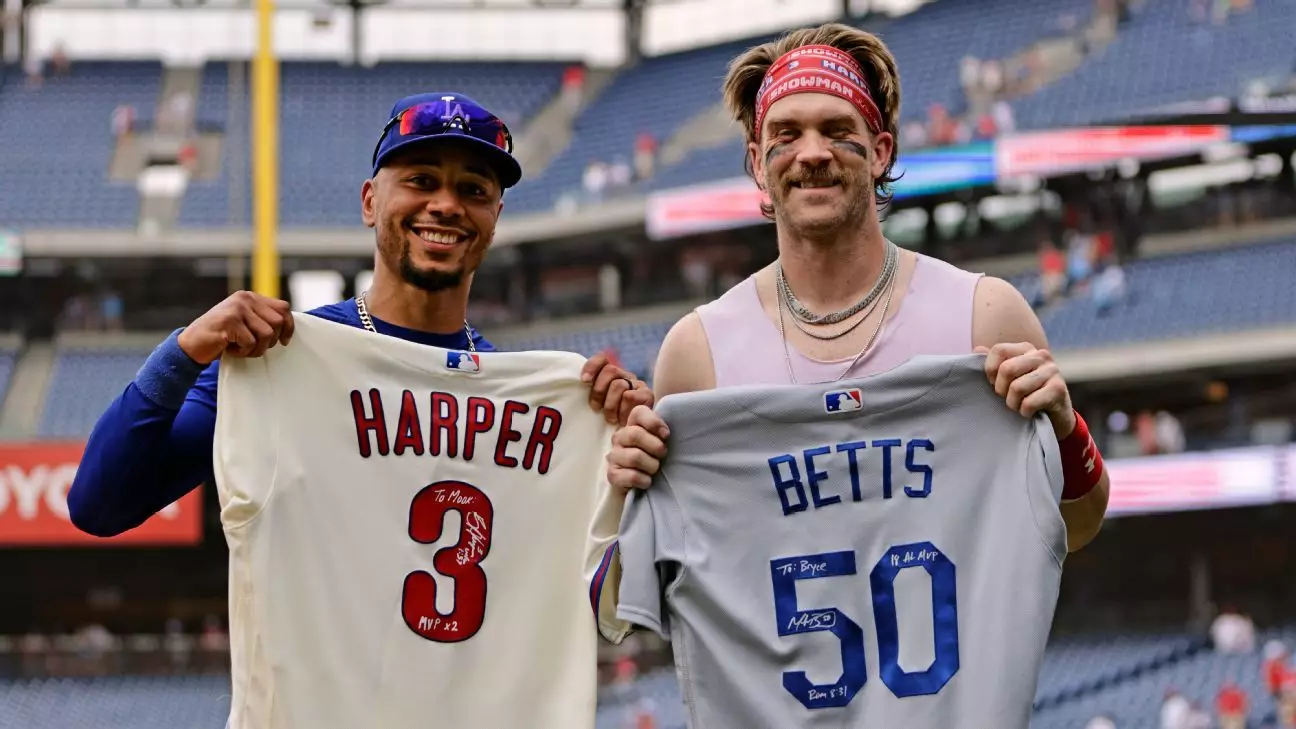The Los Angeles Dodgers have transformed into a financial juggernaut in Major League Baseball (MLB), boasting one of the highest payrolls in sports. Their near $320 million expenditure epitomizes the broader trend in baseball—a game increasingly defined by its economics, where financial flexing translates into competitive advantages. Stars like Bryce Harper have been vocal about this burgeoning disparity, openly praising the Dodgers while also critiquing those who complain about the team’s financial firepower. Harper’s sentiments resonate in a landscape where talent acquisition often hinges on the depth of one’s wallet rather than sheer skill alone.
At the core of this financial ascendance is a willingness to invest heavily in star talent. The Dodgers’ acquisition of players like Blake Snell and Michael Conforto underscores a blueprint for success rooted in aggressive market strategies. Meanwhile, MLB has seen its average salary skyrocket beyond the $5 million mark, partly propelled by such extravagant spending. These economic choices create a ripple effect throughout the league, as franchises with lesser financial resources struggle to compete, raising concerns about the competitive balance in the sport.
The Role of Deferred Payments
One complex aspect of the Dodgers’ payroll is the strategic use of deferred payments. For example, Shohei Ohtani, while earning a massive $70 million salary, is indexed differently due to financial arrangements that won’t culminate until 2035. This approach, while beneficial for immediate cash flow, gives the appearance of a lesser payroll value in the short term. Such nuances evoke questions about transparency and fairness—it appears as though the Dodgers are playing by the rules, yet still manage to create an almost unassailable economic advantage.
This convoluted financial engineering often fosters resentment among rival teams and fanbases. Critics argue that such tactics undermine a level playing field, raising alarm over the sustainability of a league without a salary cap. Moreover, these discrepancies stir debates about the integrity and future of baseball itself. It engenders a culture where franchises are often forced into spending sprees simply to remain competitive, leading them to mirror aggressive tactics or risk falling into mediocrity.
Impacts on Teams Like the Phillies
For teams like the Philadelphia Phillies, which have also invested heavily in their roster, the emergence of the Dodgers as financial behemoths poses both a challenge and a necessary inflection point. With a payroll of $283.3 million, the Phillies are attempting to counterbalance the Dodgers’ wealth through their aggressive spending. Harper himself, under a historic $330 million contract, symbolizes Philadelphia’s ambition, yet also highlights the need for a broader strategic philosophy that does not solely rely on financial might.
Teams unable to match these bloated payrolls often find themselves relegated to the outskirts of contention, stirring frustration among their fans. The ire directed at affluent teams like the Dodgers often mirrors larger economic dissatisfaction, particularly as disparities become more pronounced. For the average baseball fan, it can feel as though the game has morphed into an exclusive club where financial status determines inclusion, rather than the organic growth of homegrown talent.
The Commissioner’s Dilemma
The growing concern over spending inequalities has reached the league’s upper echelons, prompting responses from Commissioner Rob Manfred. He has expressed awareness of fans’ frustrations over the absence of a salary cap, especially as the collective bargaining agreement looms on the horizon. His hints suggest a need to find a balance, yet critics often question the timeliness and efficacy of these proposed measures. This discussion is more than a policy discourse; it reflects the deep-seated anxieties surrounding the game’s future.
The lure of Los Angeles extends beyond just financial incentives. The allure of the city itself—its vibrant culture, diverse food scene, lore of Hollywood, and historic franchises—plays a significant role in enticing talent. It’s a multifaceted battle that’s about more than just dollars; it’s about lifestyle and opportunity, drawing players to L.A. in droves. Harper’s comments reinforce this notion—living and thriving in such a metropolis offers advantages that cannot solely be quantified in financial terms. This blend of economy and allure presents a challenge to competitors attempting to attract elite players without the same resources.
The financial landscape of Major League Baseball continues to shift dramatically. While franchises like the Dodgers exemplify this trend through aggressive spending and talent acquisition strategies, they also represent the challenges that lie ahead for the sport. As these dynamics unfold, they will likely redefine the very fabric of competition in baseball for years to come.


Leave a Reply